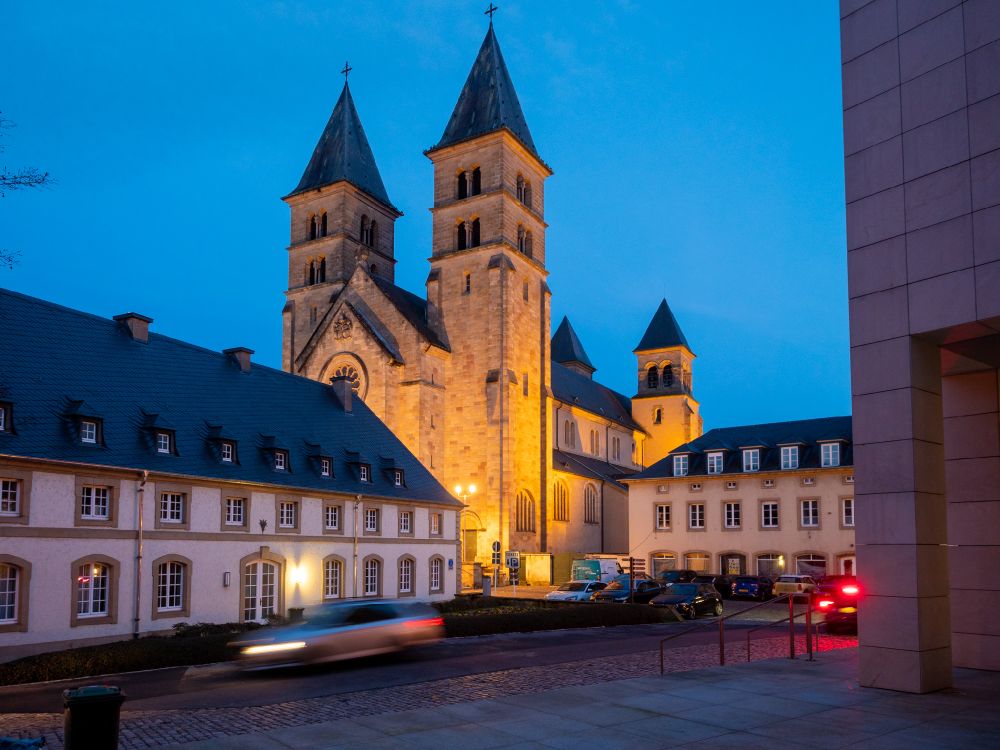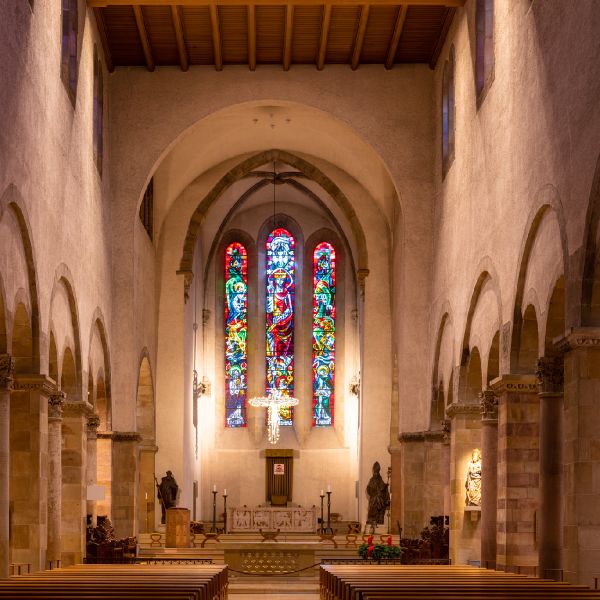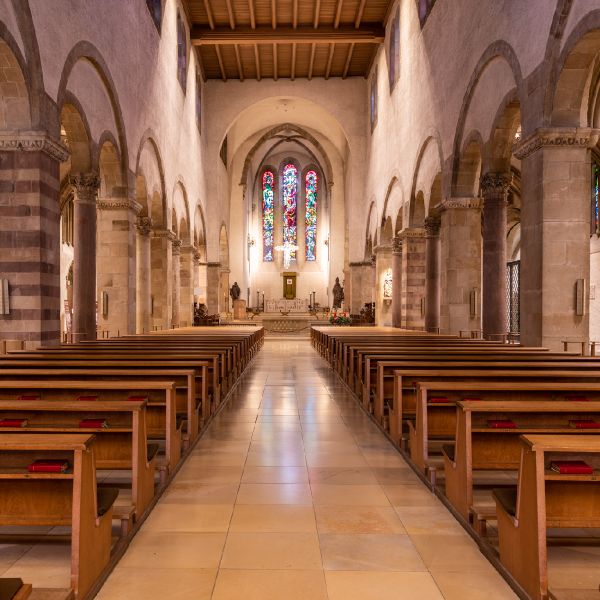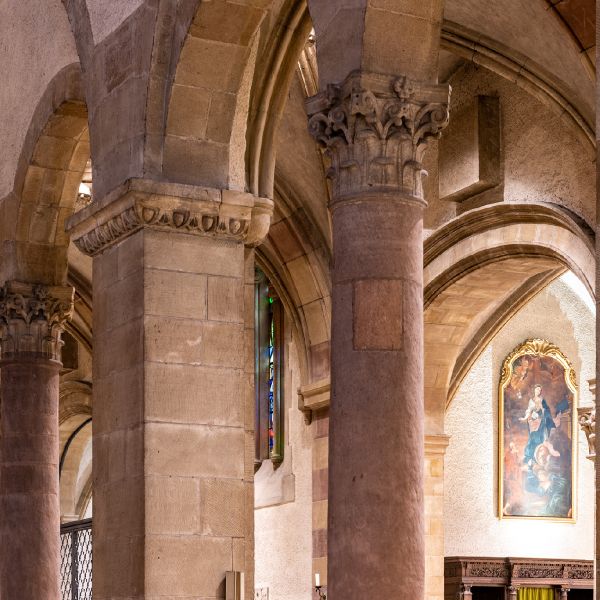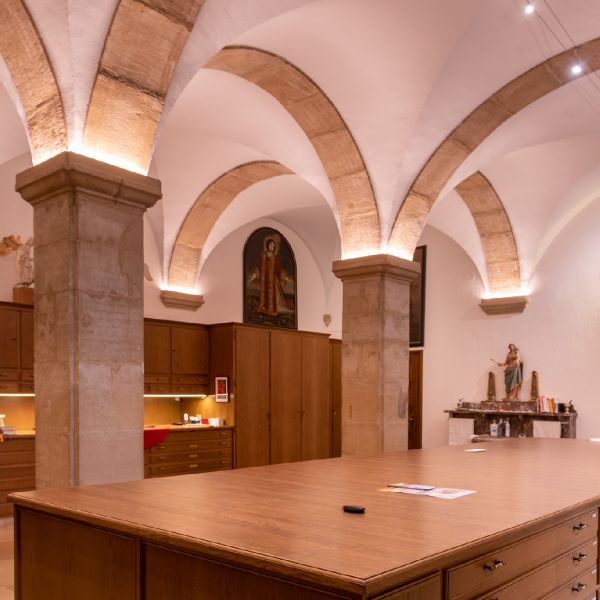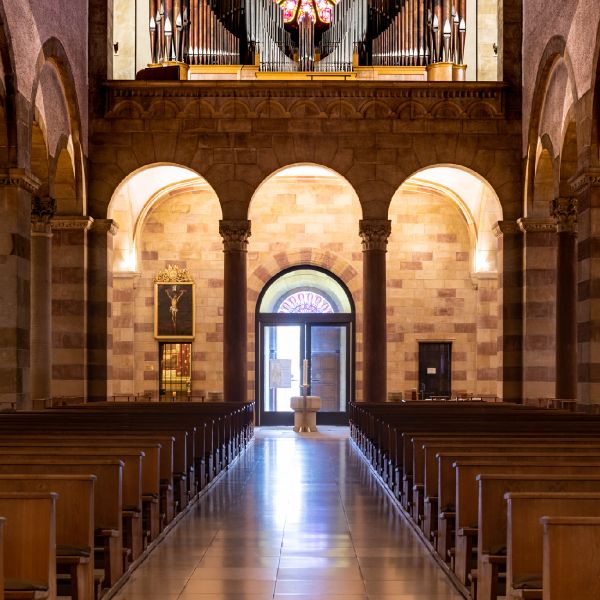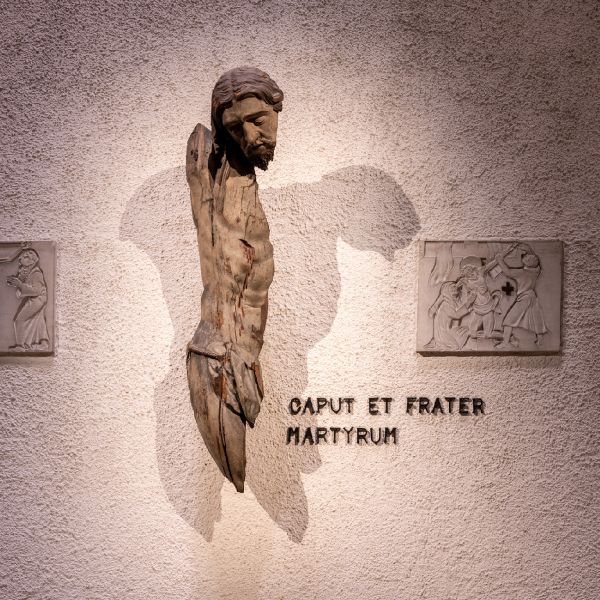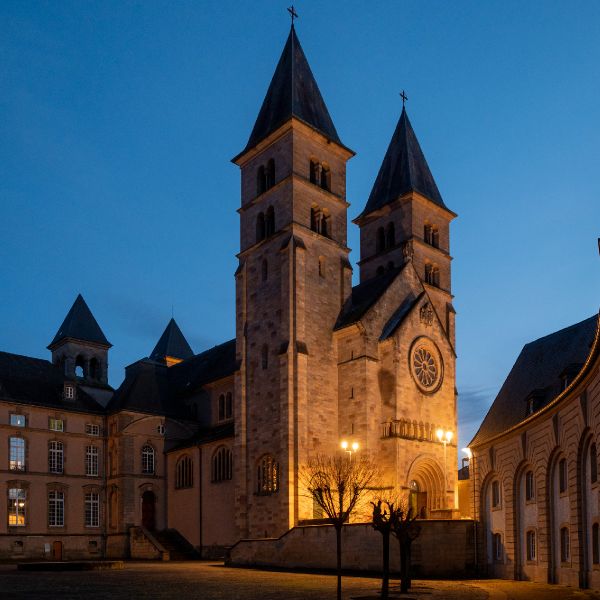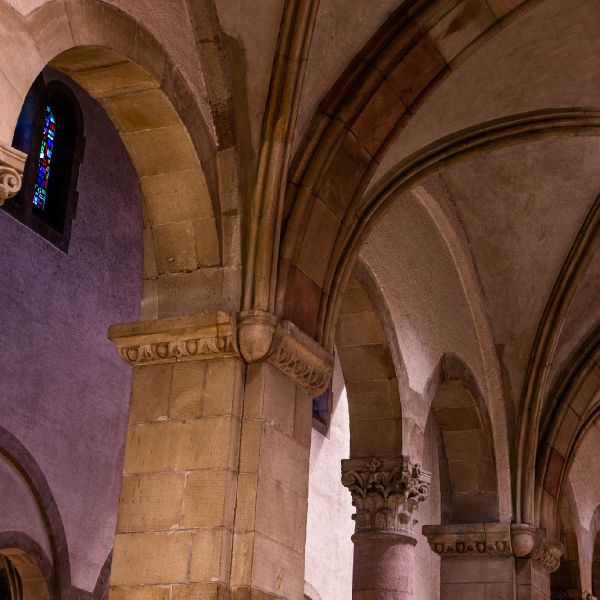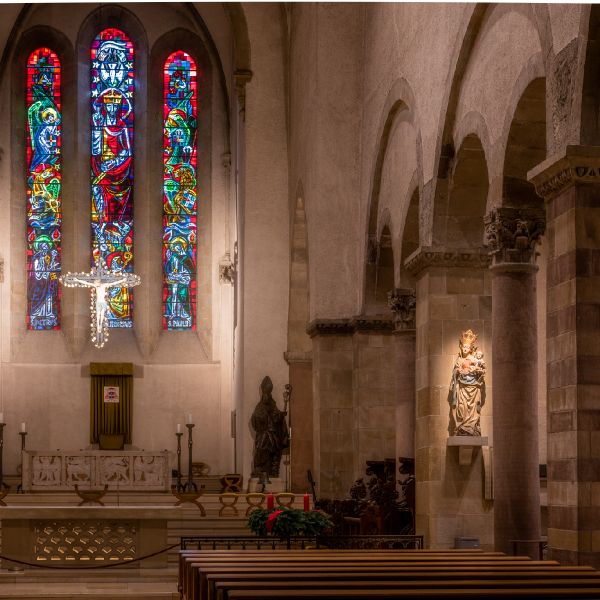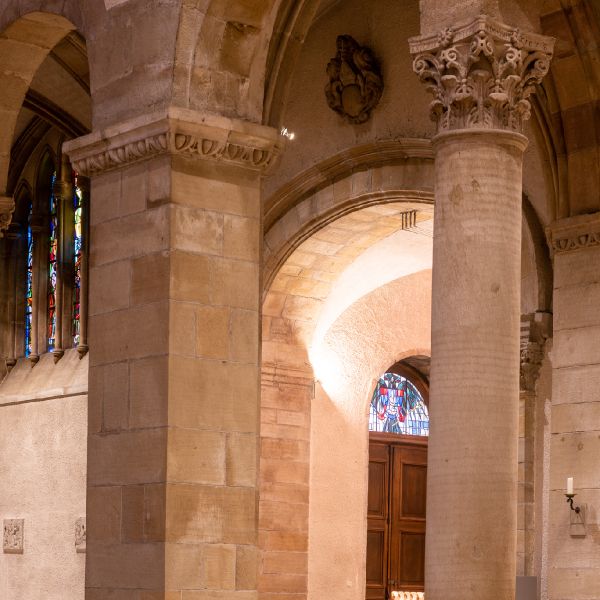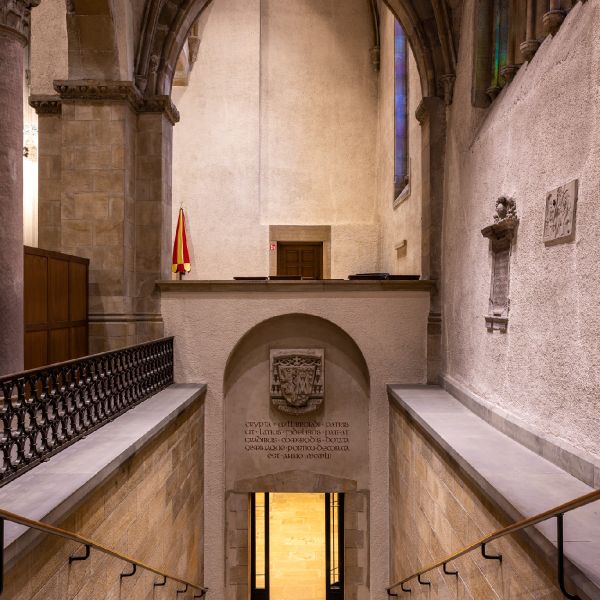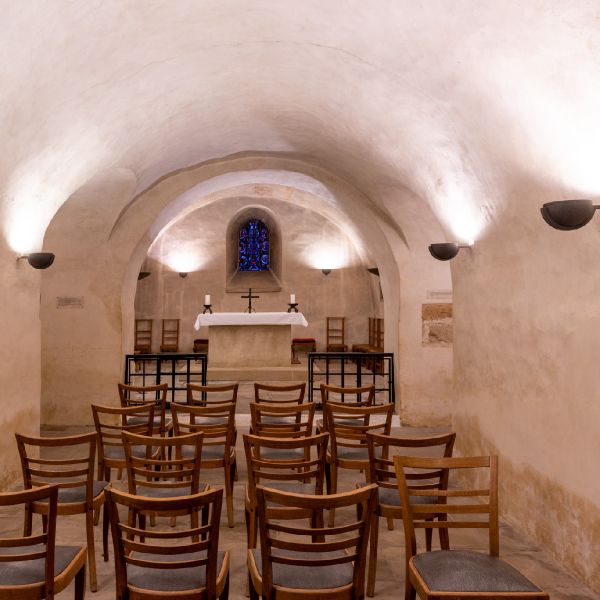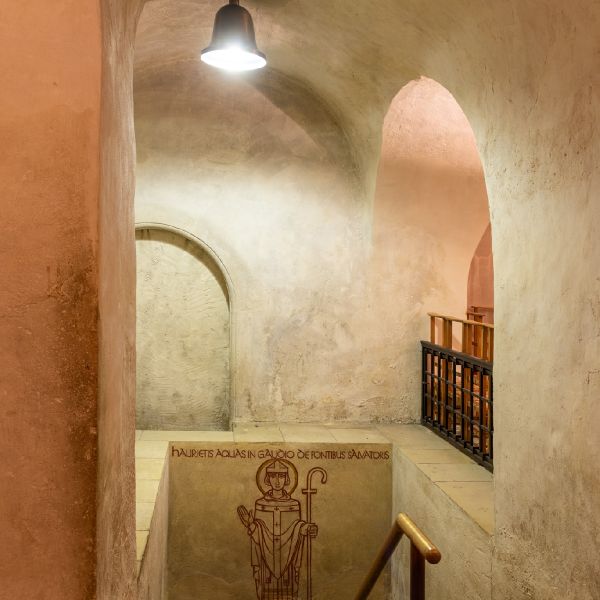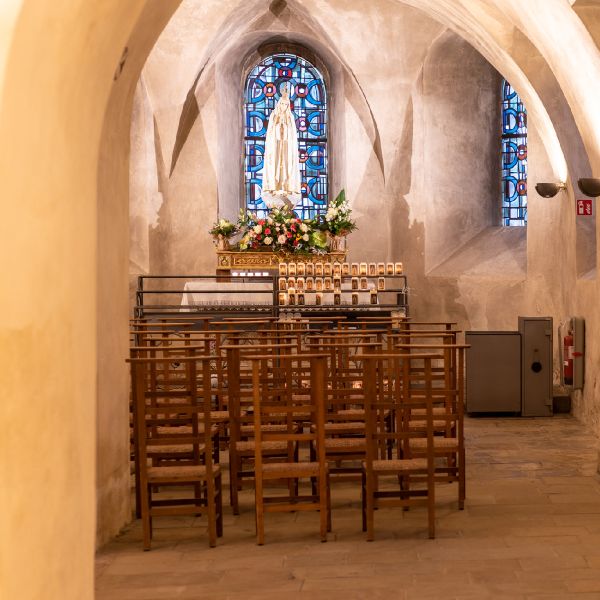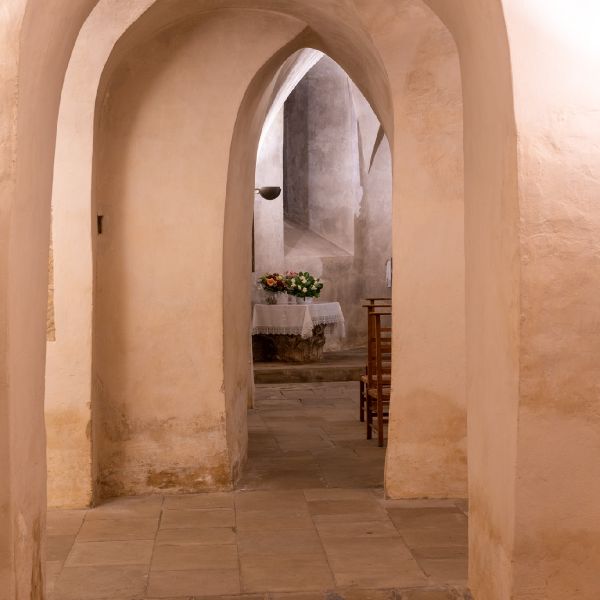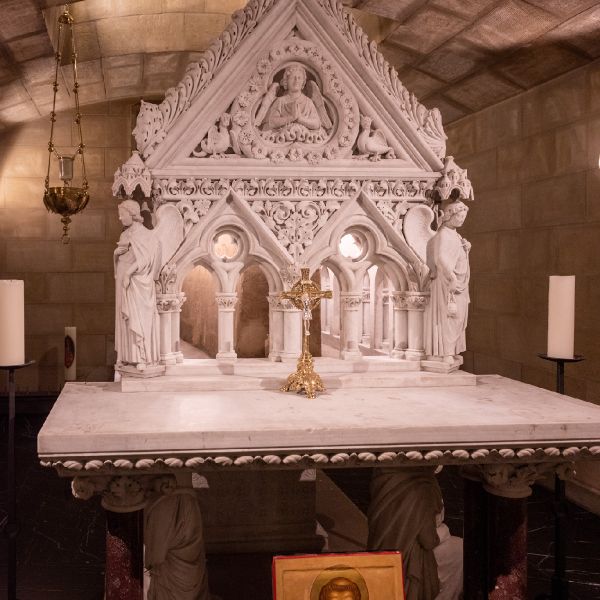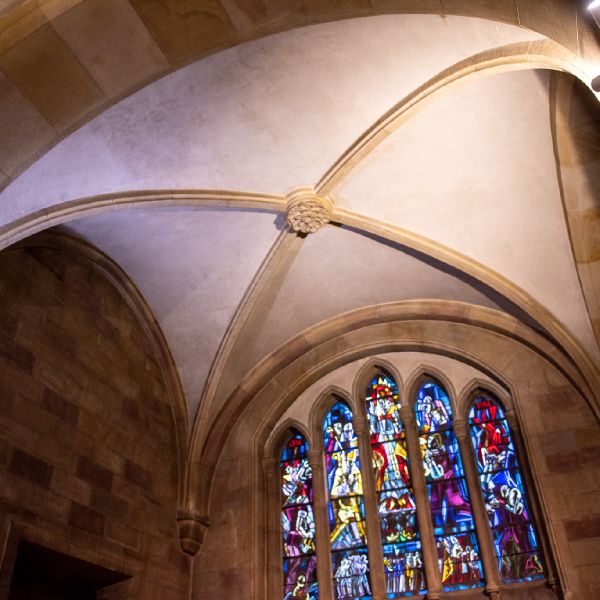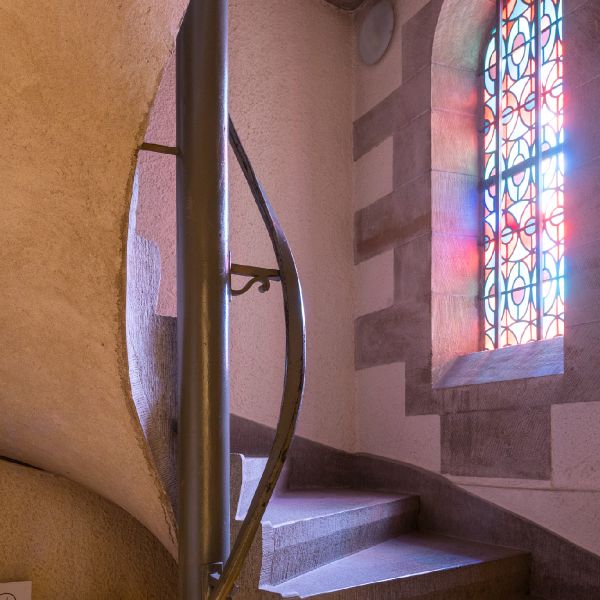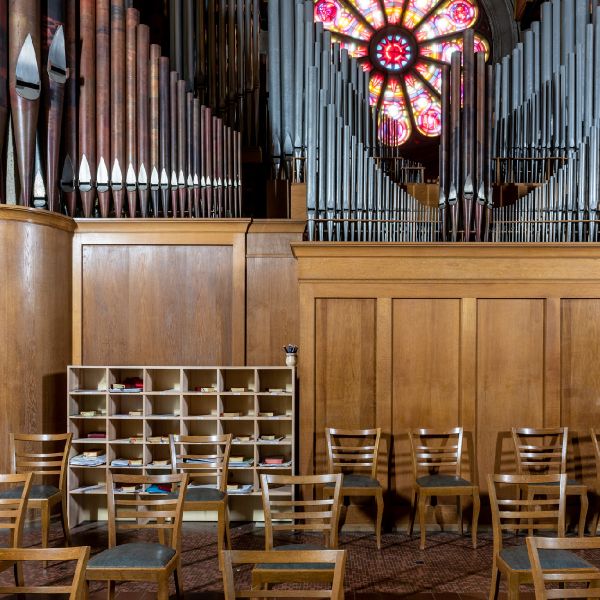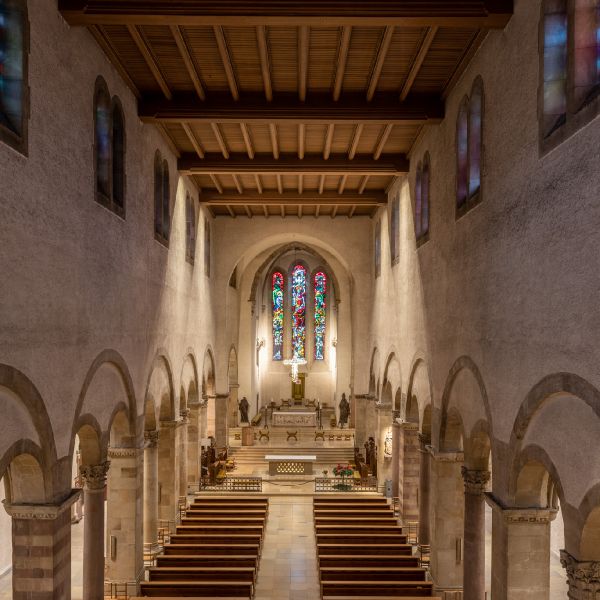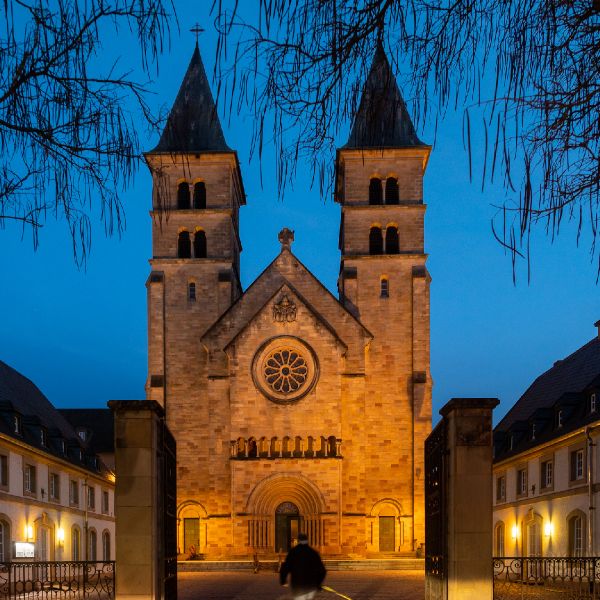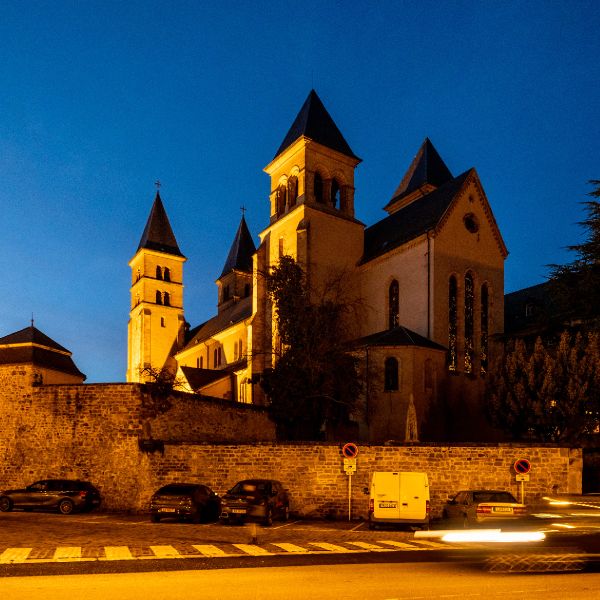Saint Willibrord Basilica in Echternach
The Saint-Willibrord Basilica of Echternach is one of the most remarkable historical buildings of Luxembourg. Edified in the 11th Century, devastated during the bombings of 1944, she was identically rebuilt after the War.
A history full of twists and turns
The origins of the Basilica are intrinsically linked to the historical figure of Willibord. In 690, the Anglo-Saxon monk was sent on the continent to work as a missionary. Five years later, he founded a monastic community based on the Rule of Saint Benedict. Around the year 700, he had built a Merovingian church with a single nave on the current location of the Basilica. After a fulfilled missionary life and many evangelic travels, Willibord dies in 739 in Echternach at the age of 81 years old. He was buried in the church he had built. After his death, he was canonized and his tombstone attracted pilgrims of all horizons. In consequence of this increasingly larger influx, a new
Carolingian church with a crypt was established circa 800. The adjacent abbey hosted a school and a scriptorium.
In 751, Pepin the Short elevated the monastery at the rank of “royal abbey” and gave his autonomy. Around the walls of the abbey developed a town who would become of the most prosperous cities of the Luxembourg county.
In 1016, a great fire devastated the abbey. The reconstruction reused Carolingian walls and spread out on fifteen years or so, until 1031. A new church was constructed at the same location, this time in Romanesque style. The village around the abbey got a franking chart in 1236 from the countess Ermesinde of Luxembourg. In the 13th century, the church has been endowed with Gothic ogival vaults and the bay windows were adapted to the new style.
In the 17th century, scholarly abbots and art enthusiasts added multiples chapels at the building including the sanctuary next to the main choir in honour of Saint Sebastian.
In 1794, during the occupation of the city by French troops, the abbey was looted and confiscated.
In 1797, the whole lot was sold at auction. The new owner, Jean-Henri Dondelinger, set up a porcelain factory.
Around the middle of the 19th century, the choir of the church partially collapsed and threatened to fall apart. A group of Echternach inhabitants created in 1862 the “Work of Saint-Willibrord” with the goal of refurbishing the church in a neo-Gothic style. The building in process of being restored was dedicated in 1868 ; the works were still ongoing for years. It was only in 1906 that the bones of Saint Willibrord could be transferred from the old parish church to their original burial place.
In December 1944, during the Battle of the Ardennes, German troops blown up the west side of the church. Only the choir and the crypt stayed intact. At the end of the War, the entire city looked like a field of ruins.
After the War, the Luxembourgish State taken over the reconstruction in Neo- Romanesque style. The site was directed by State architects Hubert Schumacher and Michel Heintz. The west side was entirely reconstructed.
The two eastern towers were rebuilt. The vault of the central nave was replaced by a flat wooden ceiling. On September 20. 1953, the church could be consecrated again.
Older drawings shows that the current building corresponds in its physiognomy to the early Romanesque construction. In 1988, the basilica
benefited of new works in the context of the 1250th anniversary of Saint Willibrord’s death.
The Crypt : the oldest place.
The crypt is the oldest section of the basilica, the only section that remains of the early Carolingian church, consumed by flames in 1016. The crypt is made up of five barrel vaulted naves which communicate with two narrow perpendicular corridors. On the choir vault, we can notice the remains of 11th century Romanesque murals. Beside the choir is the St Willibrord spring which is part of a series of fountains related to baptismal activity. The sarcophagus containing the bones of St Willibrord can be found since 1906 in a neo-Gothic funerary monument in Carrara marble.
The stained glass.
The basilica is enriched of magnificent stained glass windows who were created by French and Luxembourgish painters chosen in the context of an international contest : the French Jean Barillet, Paul Bony, Théodore Hanssen, Jacques Le Chevallier, and the Luxembourgish François Gillen, Emile and Joseph Probst, Gustave Zanter. These highly expressive stained glass windows revive the work of St Willibrord.
A alternating of unique supports.
The arcades of the central nave have a particularity. Large pilasters decorated with oves alternate with Corinthian columns. The two supports are united by curved arches. This alternating of unique supports was used for the first time in the basilica St Willibrord.
Symbolic.
The torso of a crucifix is hung on the wall in the lower side of the central nave. It is the remains of a mission cross dating from the 19th centrum, who has survived the bombings of 1944. This sculpture is held as a symbol of the reconstruction of Echternach after the War.
Documentation centre.
The old cemetery adjacent to the church has been recovered by a glass roof and now houses the documentation centre on dancing procession. It proposes paintings, historical texts, pictures, films and maps on the history and the caring out of the tradition who is part of the intangible cultural heritage of UNESCO since 2010.
The organs in the rood screen.
In 1661, the abbot Richard Paschasius had built a rood screen to facilitate the accompaniment of religious solemnities. The existence of an organ is attested since the 16th century. The organ was reconstructed on numerous occasions, notably in 1901 by Johannes Klais of Bonn (Opus 138). The current great organ dates from 1952-53 and also was made by Johannes Klais of Bonn (Opus 1010). Restored in 1991, the instrument now counts 73 stops and more than 6000 pipes.
Source : “Echternach, Grand-Duché de Luxembourg”, brochure edited by the Work of Saint Willibrord a.s.b.l. Author : Alex Langini.
